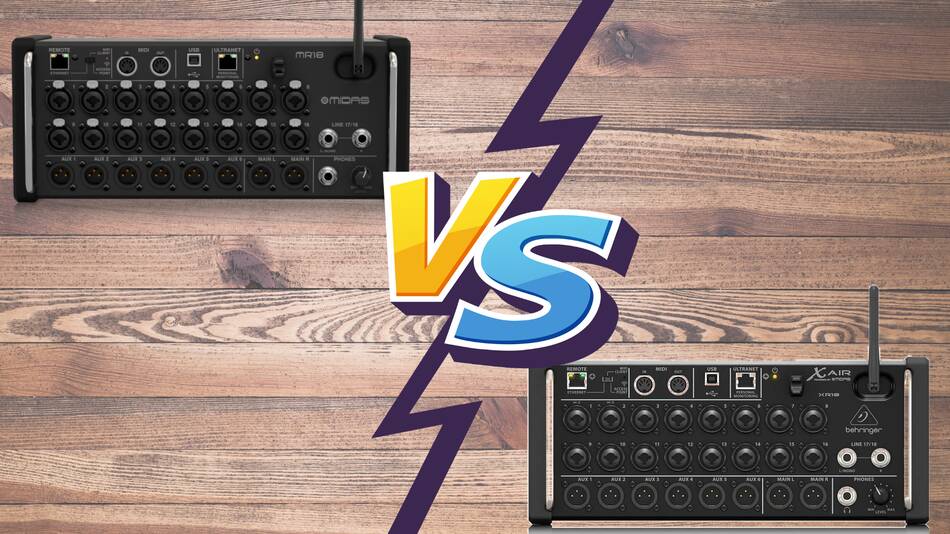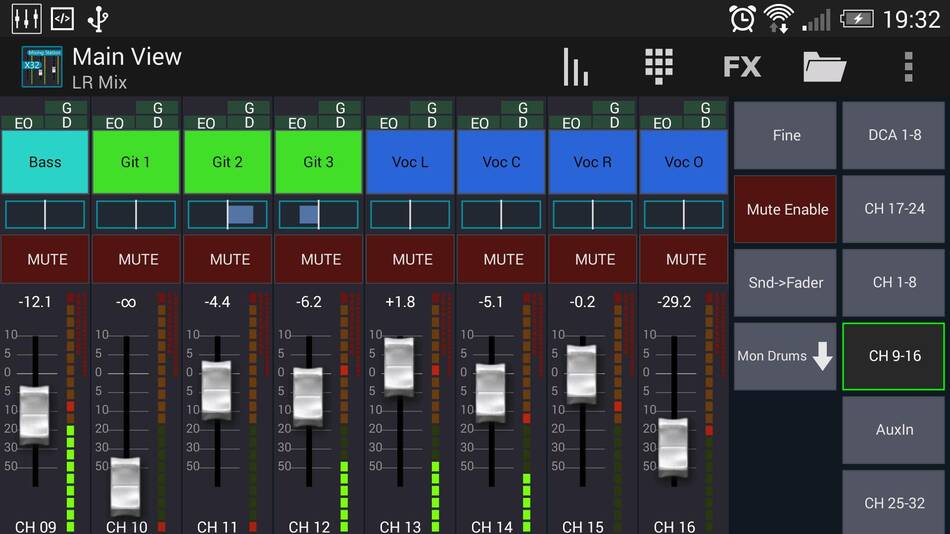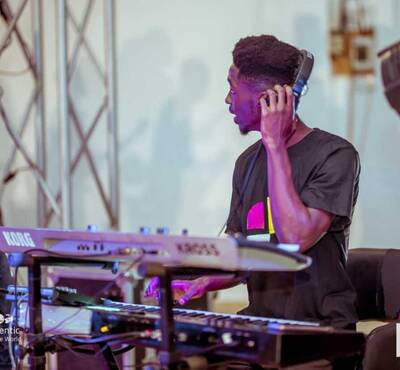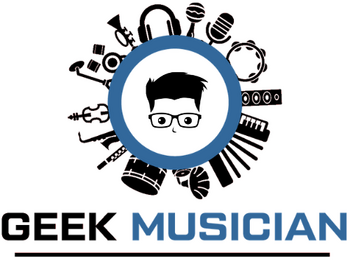
The Behringer XR18 and the Midas MR18 are two of the most popular entry-level digital mixers for many mixing engineers. Although they offer similar features, the Midas MR18 is more expensive than the Behringer XR18.
So what’s the main difference between Midas MR18 vs Behringer XR18? Is it worth spending the extra cash on the Midas? Or you should probably save some cash by going for the Behringer XR18. I spent some hours researching this topic, and here is what I found.
What’s the difference between the Midas MR18 and Behringer XR18 digital mixer? Although both Midas MR18 and Behringer XR18 offer the same inputs, outputs, and similar technology, the Midas MR18 has better-sounding preamps, offers a longer warranty period, a higher output level dBu, and has locking XLR connectors. On the other hand, the Behringer XR18 has Hi-Z inputs, suitable for guitars.
For all those who don’t understand what these differences mean and how they affect the mixer’s overall sound quality, don’t worry. We will take a look at each difference, one at a time, and explain. If you already know what they are, stick around and keep reading because there is a lot to learn in this article.
I’ll also give you some tips on how to get the best out of your Midas MR18 or Behringer X Air 18 digital mixing console.
Table of Contents
Differences between the Midas MR18 and the Behringer XR18 Digital Mixer
There is no denying the fact that these two digital mixers look very identical. You may actually mistake one for the other unless you get close enough to see the brand’s logo on it. Both digital mixers use very similar software and have the same number of inputs and outputs, a USB Type B port, and a built-in router.
However, the Midas MR18 (on Amazon) is sold for almost twice the price of the Behringer X Air 18 (check the price of the Behringer XR18 on Amazon).
So let’s take a look at the differences between these two digital mixers.
1. Preamps
The main difference between the Behringer XR18 and the Midas MR18 is their preamps. The preamps used in the Midas MR18 are the Midas PRO preamps. These are the preamps you’ll find in all of MIDAS’s digital mixers, including the M32, M32R, PRO1-IP, and MR12, as well as some of their stage boxes.
On the other hand, the preamps used on the Behringer XR18 are the Midas-designed preamps. Similarly, these are the preamps used on Behringer’s digital mixing consoles like the X32, X32 Rack, and XR12, as well as some of their stage boxes.
As you can tell from the preamp’s name, Behringer XR18 preamps were designed by Midas. However, they are not as good as the preamps used in Midas’ own products.
That’s because after reading so many reviews about the Midas PRO preamps and the Midas-designed preamps, the conclusion was that Midas PRO preamps sound much better than Midas-designed preamps found in the Behringer XR18.
The first reason why is, Midas PRO preamps capture audio at a sample rate of 96kHz. On the other hand, Midas-designed preamps on the Behringer XR18 capture audio at a sample rate of 48kHz.
Secondly, many audio and mixing engineers vouch for Midas PRO preamps when compared to the Behringer XR18 preamps. The preamps and converters in the Midas MR18 is the main reason why many engineers spend the extra cash to get it over the Behringer XR18.
2. Output dBu
Another difference between the Behringer XR18 and the Midas MR18 digital mixers that many people are not aware of is the Output dBu.
Similar to decibels (or dB), dBu is also a measure of how loud an audio signal is. 0dBu is equivalent to 0.775 volts. Let’s get back to the point.
The Behringer XR18 has a maximum output of +16dBu. This means that all of the output ports on this unit (headphone outputs, aux outputs, and the main outs) can deliver a maximum of +16dBu. On the other hand, the Midas MR18 has a maximum output of +21dBu.
What does this all mean? It means the Midas MR18 can send out a much hotter or louder audio signal to power amps, headphones, or monitors.
3. Locking XLR Connectors
Another subtle difference between the Midas MR18 and the Behringer XR18 is that the Midas MR18 has a locking XLR connector on all its inputs. The Behringer X Air 18 has no locking XLR connector.
But what is a locking XLR connector? Just as the name depicts, these are input jacks that lock an XLR cable that is connected to it. This is a useful feature because it prevents XLR cables from being accidentally ejected from the mixer.
You know how this often happens on stage when someone accidentally trips on a cable. This is not a mind-blowing feature and probably not the reason why many people will spend the extra cash on an MR18. But it’s really helpful.
4. Warranty
Another big difference between the Behringer X Air 18 and the Midas MR18 is the warranty.
Behringer offers a 3-Year Limited Warranty for all of their products, and that includes the XR18. Once you purchase the product, you are supposed to register it on their official website. The warranty period begins from the date of purchase. You can read more on Behringer’s limited warranty terms and conditions here.
Midas, on the other hand, offers a 10-Year Limited Warranty on all of its products, including the Midas MR18 Digital Mixer. Similarly, you can register your digital mixer on their website after you purchase them.
I don’t know about you, but that tells me Midas is more confident in the build quality of their products than Behringer. And a ten-year warranty is a testament to that.
5. Hi-Z Inputs
Hi-Z input is an abbreviation for high-impedance inputs. These are inputs designed primarily for instruments with no amplification. Specifically, Hi-Z inputs are made for instruments such as an electric or acoustic guitar — or essentially instruments with pickups but with no amplification. On audio devices, you’ll find these inputs labeled as Hi-Z inputs or instrument inputs.
An advantage the Behringer XR18 digital mixer has over the Midas MR18 is it has two dedicated Hi-Z inputs; the Midas MR18 does not. This makes it much more convenient to plug a guitar or bass directly into the Behringer XR18.
You will get more volume from your guitar when it is plugged in a Hi-Z input than you’ll get when it’s plugged in a regular line input. So that’s something to take note of.
Which one should you buy? My opinion
If you have the extra cash to spend, I recommend you go with Midas MR18 (Amazon). That’s because it has a better build quality and sounds better. Also, the longer warranty period means you can always return it when something goes wrong within the period.
However, if you don’t have that extra money, definitely go with the Behringer XR18. Many mixing engineers use it, and they get great results with it.
The workflow on both mixers are the same, and they have the same features, only a few differences. You are not missing out on anything really major.
How to Get the Best Out of the Midas MR18 and Behringer XR18 Digital Mixers
Although these are two of the most popular digital mixers available today, they are not perfect. So, regardless of the option you go for, here is how to improve the workflow of these two mixers.
1. Get a dedicated router
As you may already know, WiFi is required to control these two digital mixers. Both the Midas MR18 and the Behringer XR18 digital mixers have a built-in router. However, these built-in routers are simply not reliable.
Firstly, because these routers have a very short range, you need to be close enough to the mixers to use them. Even when you are close, it might still malfunction. And I’m sure that’s not what you want. Besides the routers having a short-range, you will experience many dropouts and lose control over the mixer when you depend on the built-in router.
To avoid any of these issues, I highly recommend you get an external router for these mixers. They are much more reliable, have a longer range, and it’s highly unlikely that you’ll experience any dropouts.
The router doesn’t have to be crazy expensive. However, make sure you get something that has a longer range. It will come in handy when you are using your mixer in a larger space like an auditorium or at a festival.
If you are looking for a recommendation, the Netgear AC1600 WiFi Router (on Amazon) is an excellent router that won’t break the bank. This router has a coverage of up to 1200 square feet, and you can connect up to 20 devices. This is more than enough for you as well as the band you are working with.
You can also check out my review of the best wireless routers for digital mixers that mixing engineers use on a day-to-day basis. You’ll definitely find something that fits your needs and your budget.
2. Use the Mixing Station App

Behringer XR 18 uses software known as the X Air Edit app. Similarly, the Midas MR18 is controlled with a software known as the M Air Edit app. They are available for Mac, PC, android, and iOS devices.
Although these apps get the work done, they are not the most intuitive and user-friendly app out there. This is where the Mixing Station app comes in.
Mixing Station is a third-party app made for digital mixers, including the Midas MR18 and Behringer XR18. And trust me, this app is way better than Behringer and Midas’ very own controller apps. That’s because it has a very easy to understand interface and also makes complex stuff easy. For instance, audio routing on the Mixing Station app is way more convenient.
There are so many great things about this app; I can’t cover it all in this article. There is also a Pro version of this app, which allows you to build your own custom layout. If you are interested in such customizations and you’re a bit geeky, you should definitely check it out.
Conclusion
Both the Behringer X Air 18 and the Midas MR18 digital mixers are excellent entry-level mixing consoles. However, the Midas MR18 is the better option for many reasons already discussed. If you can afford it, then go for it. Else, you will probably do just fine with the Behringer XR18 console as well.
I hope this article helped you with all the differences between the Behringer X Air 18 and the Midas MR18. If you found this useful, don’t forget to share

Hi, I’m Raymond. A keyboard player, music producer, and writer. And I’m also the founder of this blog. As someone who has been working with several audio and music equipment and different musicians for many years, my goal is to answer all your questions on music and equipment, as well as the latest music software and technology. For more info, check out my about me page


